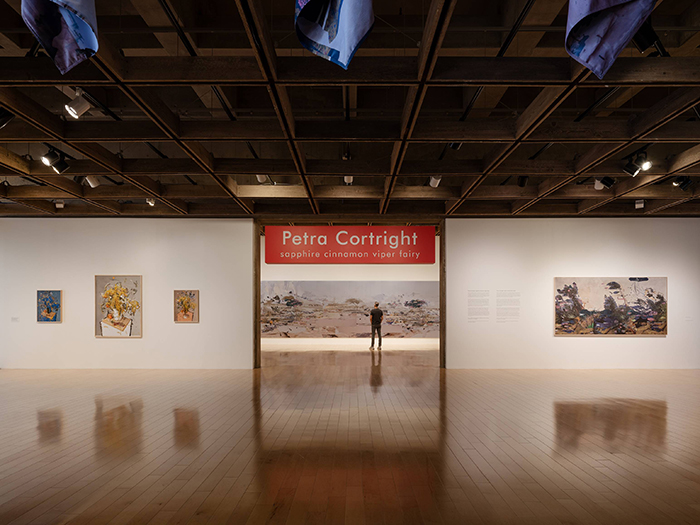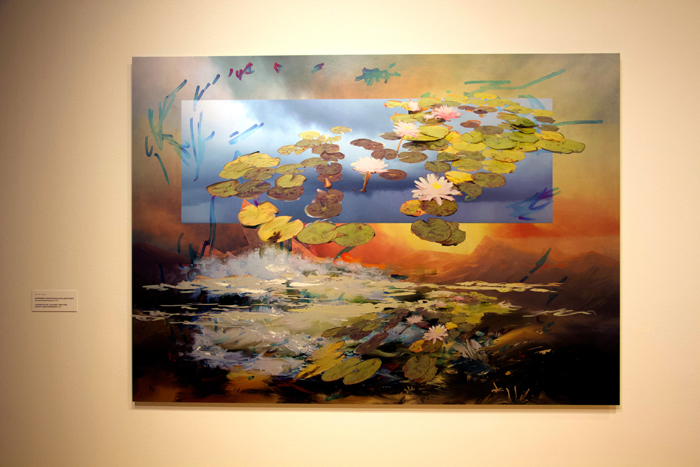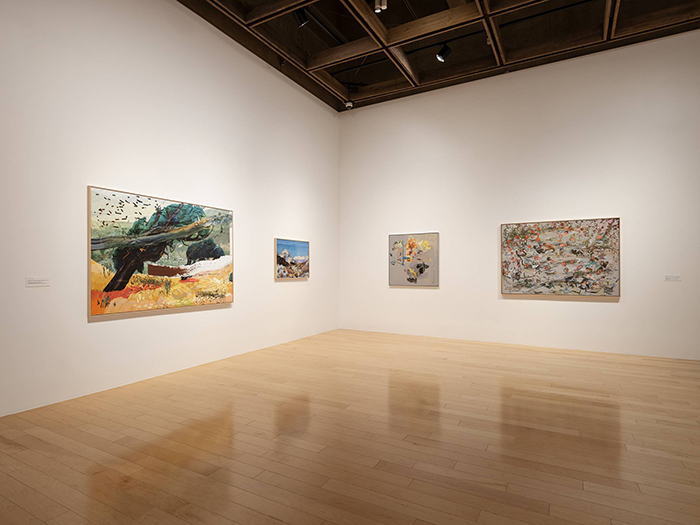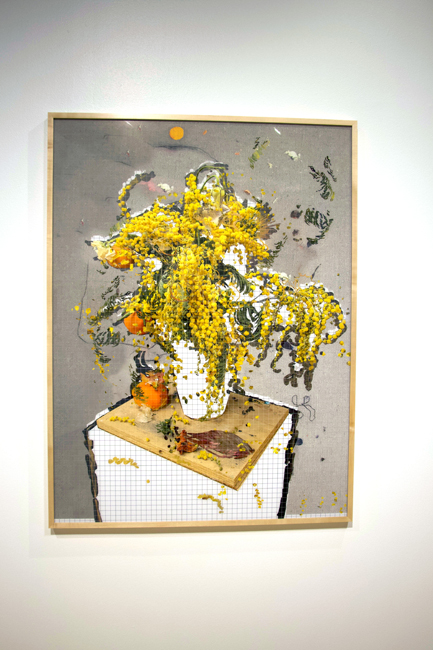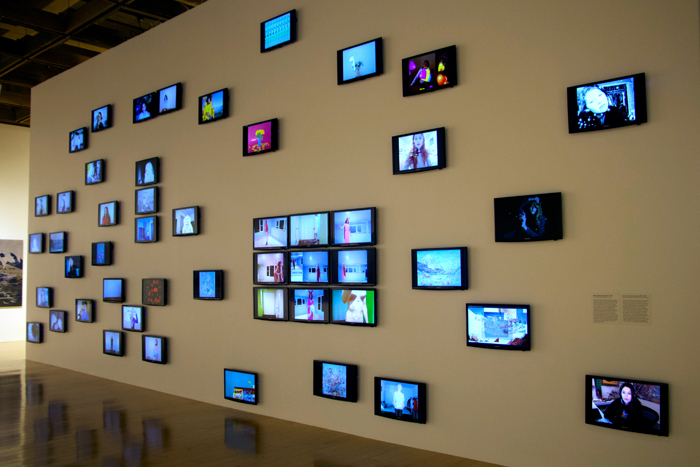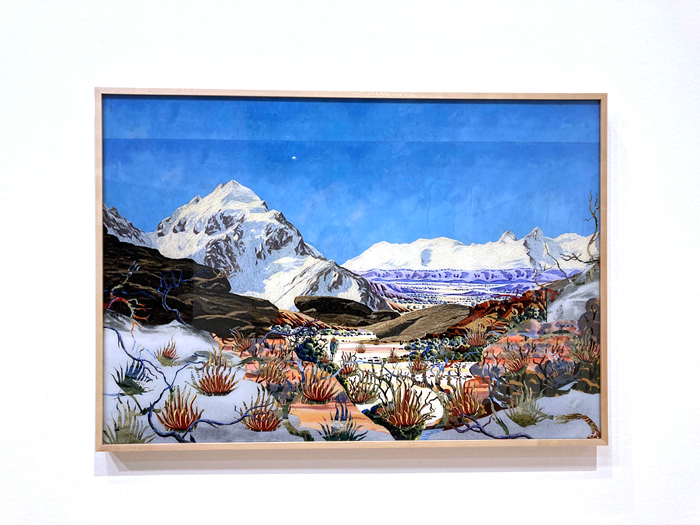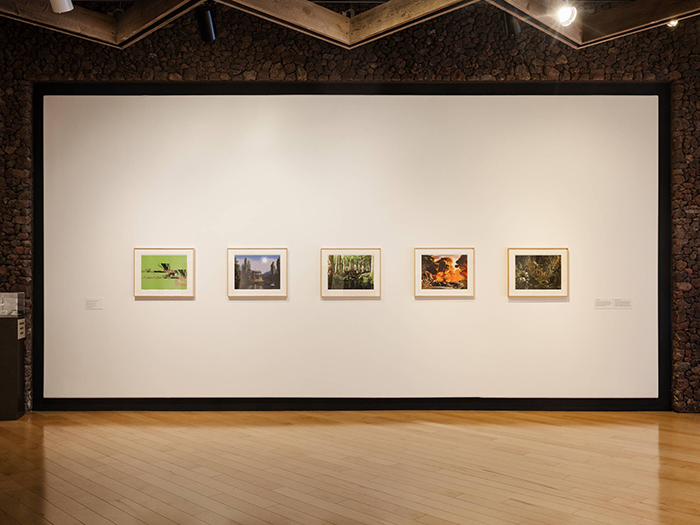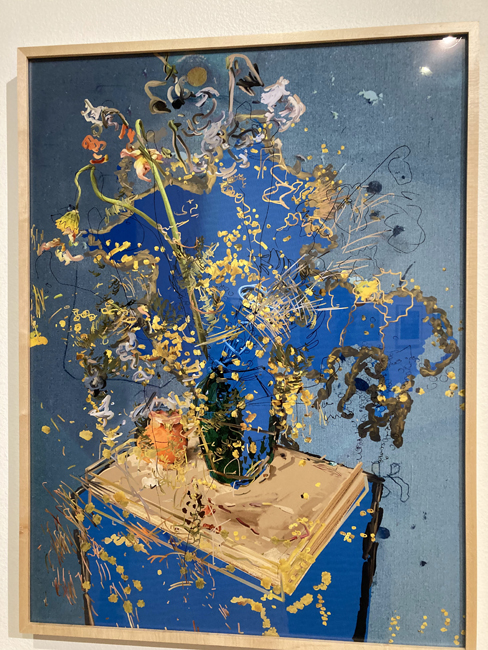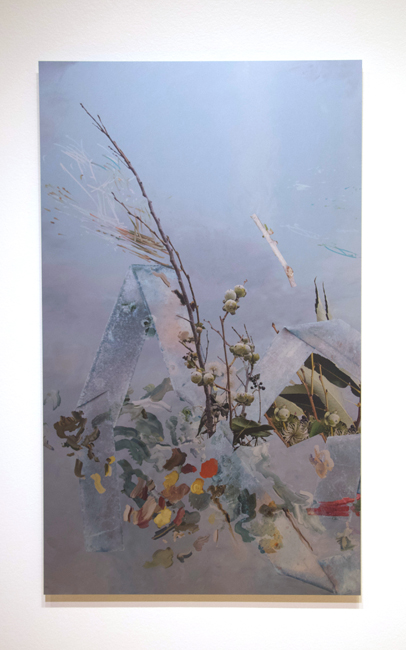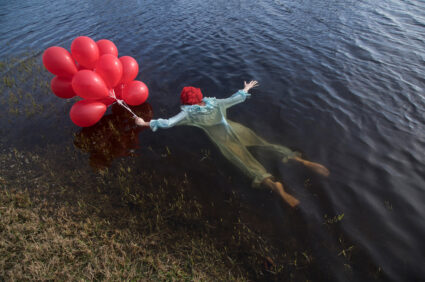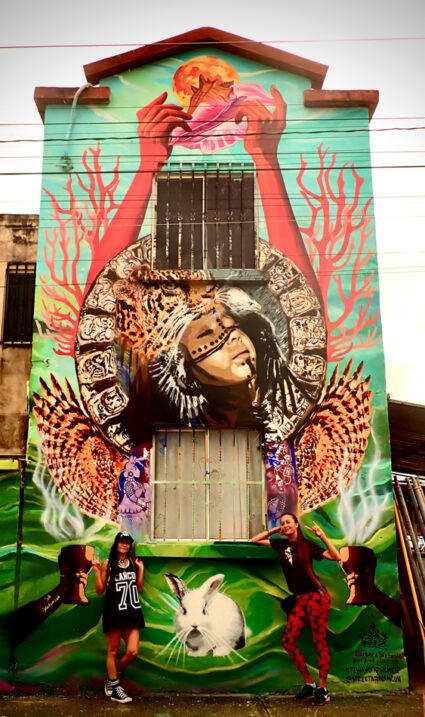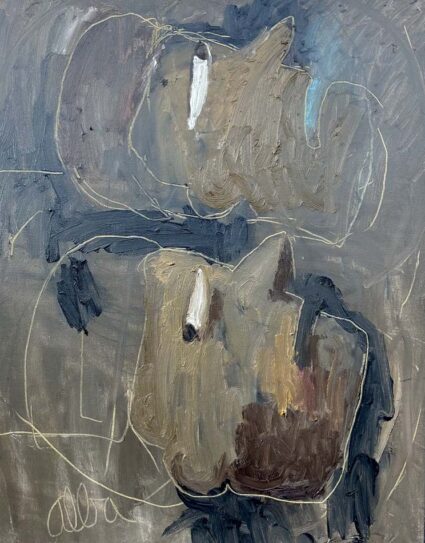Petra Cortright, a Net Art and Post-Internet Art painter, bends traditional art-world genres in a solo exhibition at the Palm Springs Art Museum.
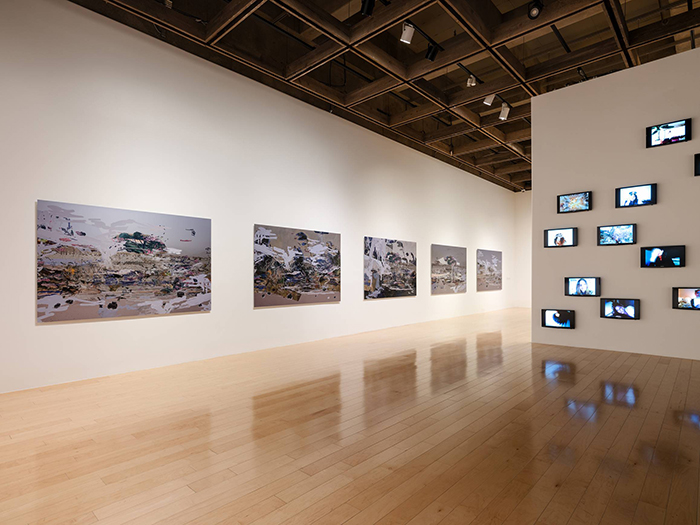
Petra Cortright: sapphire cinnamon viper fairy
September 29, 2022–March 26, 2023
Palm Springs Art Museum
Artist Petra Cortright, once named the “Monet of the 21st Century” by Artsy, has described herself as a painter that doesn’t paint and questions what defines a painting. The interdisciplinary artist, known for her role in the Net Art movement, collages and layers imagery sourced from the internet, and employs digital brush tools she has compiled over the years. Cortright attributes her use of the medium to its economy—paint and canvas are costly; controlling pixels, cataloging, and working with saved brush packs is not.
Petra Cortright: sapphire cinnamon viper fairy, the thirty-six-year-old artist’s first solo United States museum exhibition, showcases a collection of approximately thirty medium to large-scale paintings that are printed on canvas, anodized aluminum, Belgian linen, and various types of paper.
Cortright often produces series where a collection of works comes from a single Photoshop file containing a base image and hundreds of layers of brushstrokes and other deconstructed images. The results are landscapes that are pastiches of preternatural desert valleys sprouting with agave, mountain ranges, canyons, and flowers, while her still lifes resemble distorted ikebana arrangements.
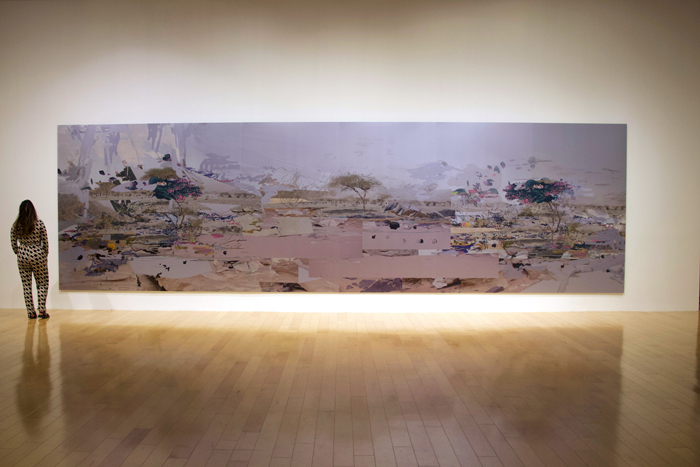
The largest of Cortright’s paintings, cheerleaders upskirt_Clothing of roman goddesses_DeBeers diamond cartel (2022), depicts a dreamscape where the details aren’t entirely defined from a distance, which adds to its mystery. As the viewer steps closer, they might notice the quick digital slashes, the compilation of found beauty Cortright scours the web to find—Cortright’s pieces are objectively decorative and pretty and Cortright admits this is her intention.
The artist also makes worlds borrowed from worlds she has found online. In the series Flash Stills, Cortright hacked into a software platform that generates animated screensavers and extracted content that she compiled into a hyperrealistic menagerie of animals in various environments. This series looks intentionally rudimentary, a way to comment on digital dependence.
Cortright speaks of the anxiety that comes with living in the Western U.S., which is experiencing extreme outcomes of climate change. This has influenced the work of the Santa Barbara-born, Los Angeles-based artist—Cortright has explained that her color palette is informed by the post-apocalyptic light that blankets LA County in a climate of seemingly never-ending wildfires. You can see this look in HOW TO SELL OLD RECORDS ON THE INTERNET_TWISTED METAL 2. (2021), where cacti that look to be red agave resemble little fires setting the landscape ablaze in vibrant hues.
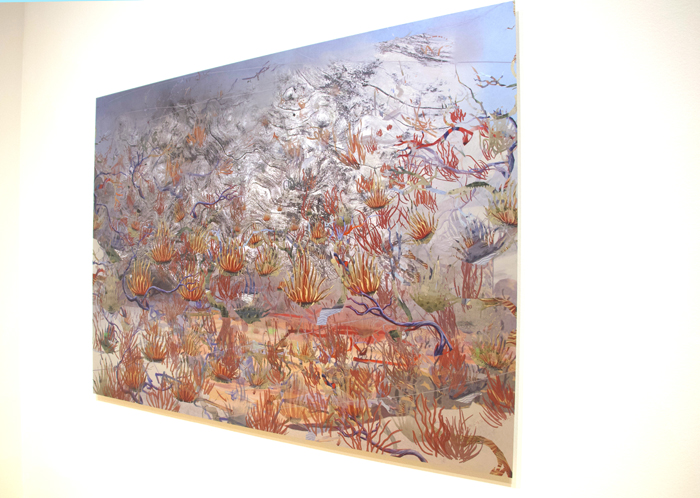
A visual outlier of the exhibition is a wall mounted with fifty monitors displaying more than 200 videos showing Cortright in various angles, backdrops, hair colors, themes, and moods. These types of videos are how I came to know Cortright in the late aughts, and how she came to be associated with Post-Internet Art.
In some videos, emojis scroll across the screen. In others, Cortright kicks a soccer ball, dances, and uses simple effects, graphics, and filters. A cat for a face, parrots, pizza slices, and basketball emojis dance across the screen. The videos, described as self-portraits, have been uploaded to YouTube and feel young.
Many of these works date back to the mid-aughts and Cortright’s early use of keyword manipulation to lure viewers to her YouTube videos. By misrepresenting the content of her videos through keyword tagging, Cortright deceives her viewers and then directly engages with them in the comments. This discourse is a way for Cortright to explore connections on the internet. Here, Cortright makes a statement on the voyeuristic tendencies of the internet, what it means to be a woman in the medium, and how we form connections through it.
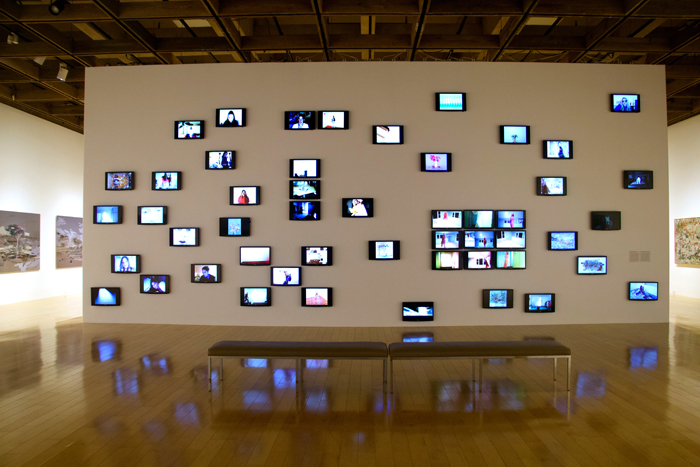
Cortright’s work is also progressing from basic videos to higher-brow work through technology. It’s telling to see Cortright be linked to both Net and Post-Internet Art. While the boundaries of the two art movements are hard to define, what appears to be the main difference (depending on who you ask) is that Net Art, which dates back to around 1993, is art that must exist within the browser. Post-Internet Art is produced with regards to the internet and can exist within Cortright’s chosen media and physical spaces. She straddles the movements by producing landscape pieces based on one source file that can produce many versions of one scene. This makes the pieces ephemeral but since Cortright prints them on large-scale materials and hangs them in a gallery, the works become commanding, valuable.
I like that Cortright refrains from imbuing her works with politics or even social commentary. Admittedly, I’m drawn to beauty and Cortright’s traditional pieces are pleasing to be around. While not all of her work is devoid of statements, her video pieces establish Cortright’s development as an artist—at least that’s how it feels to me.
In the Palm Springs Art Museum store, I found Cortright’s E-Girl (2021), a collection of selected video stills from 2011 through 2018. Cortright dedicates the book to “all the girls” and lets us know that “it’s never too late to log off.” I’m glad Cortright hasn’t logged off, and that her work seems to be evolving.
